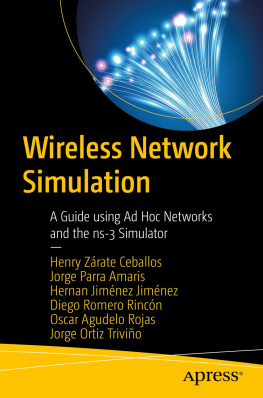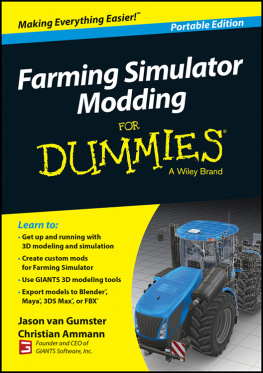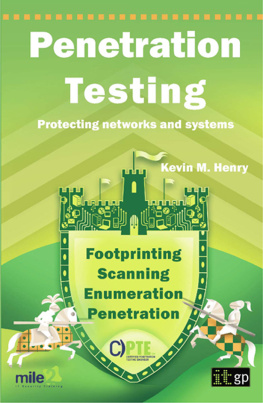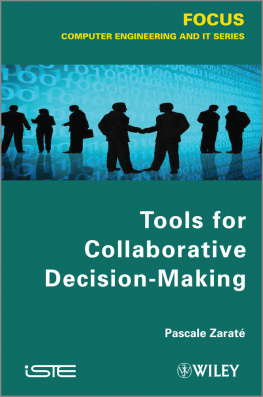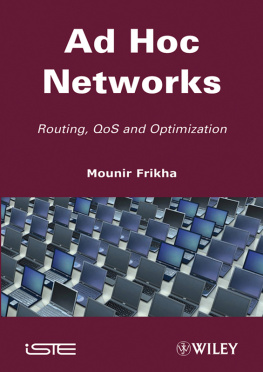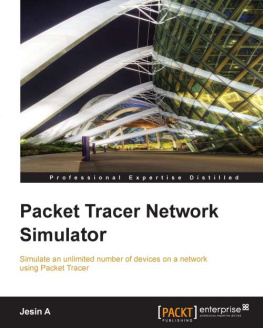Henry Zárate Ceballos - A Guide using Ad Hoc Networks and the ns-3 Simulator
Here you can read online Henry Zárate Ceballos - A Guide using Ad Hoc Networks and the ns-3 Simulator full text of the book (entire story) in english for free. Download pdf and epub, get meaning, cover and reviews about this ebook. year: 2021, publisher: Apress, genre: Computer. Description of the work, (preface) as well as reviews are available. Best literature library LitArk.com created for fans of good reading and offers a wide selection of genres:
Romance novel
Science fiction
Adventure
Detective
Science
History
Home and family
Prose
Art
Politics
Computer
Non-fiction
Religion
Business
Children
Humor
Choose a favorite category and find really read worthwhile books. Enjoy immersion in the world of imagination, feel the emotions of the characters or learn something new for yourself, make an fascinating discovery.
- Book:A Guide using Ad Hoc Networks and the ns-3 Simulator
- Author:
- Publisher:Apress
- Genre:
- Year:2021
- Rating:4 / 5
- Favourites:Add to favourites
- Your mark:
- 80
- 1
- 2
- 3
- 4
- 5
A Guide using Ad Hoc Networks and the ns-3 Simulator: summary, description and annotation
We offer to read an annotation, description, summary or preface (depends on what the author of the book "A Guide using Ad Hoc Networks and the ns-3 Simulator" wrote himself). If you haven't found the necessary information about the book — write in the comments, we will try to find it.
A Guide using Ad Hoc Networks and the ns-3 Simulator — read online for free the complete book (whole text) full work
Below is the text of the book, divided by pages. System saving the place of the last page read, allows you to conveniently read the book "A Guide using Ad Hoc Networks and the ns-3 Simulator" online for free, without having to search again every time where you left off. Put a bookmark, and you can go to the page where you finished reading at any time.
Font size:
Interval:
Bookmark:
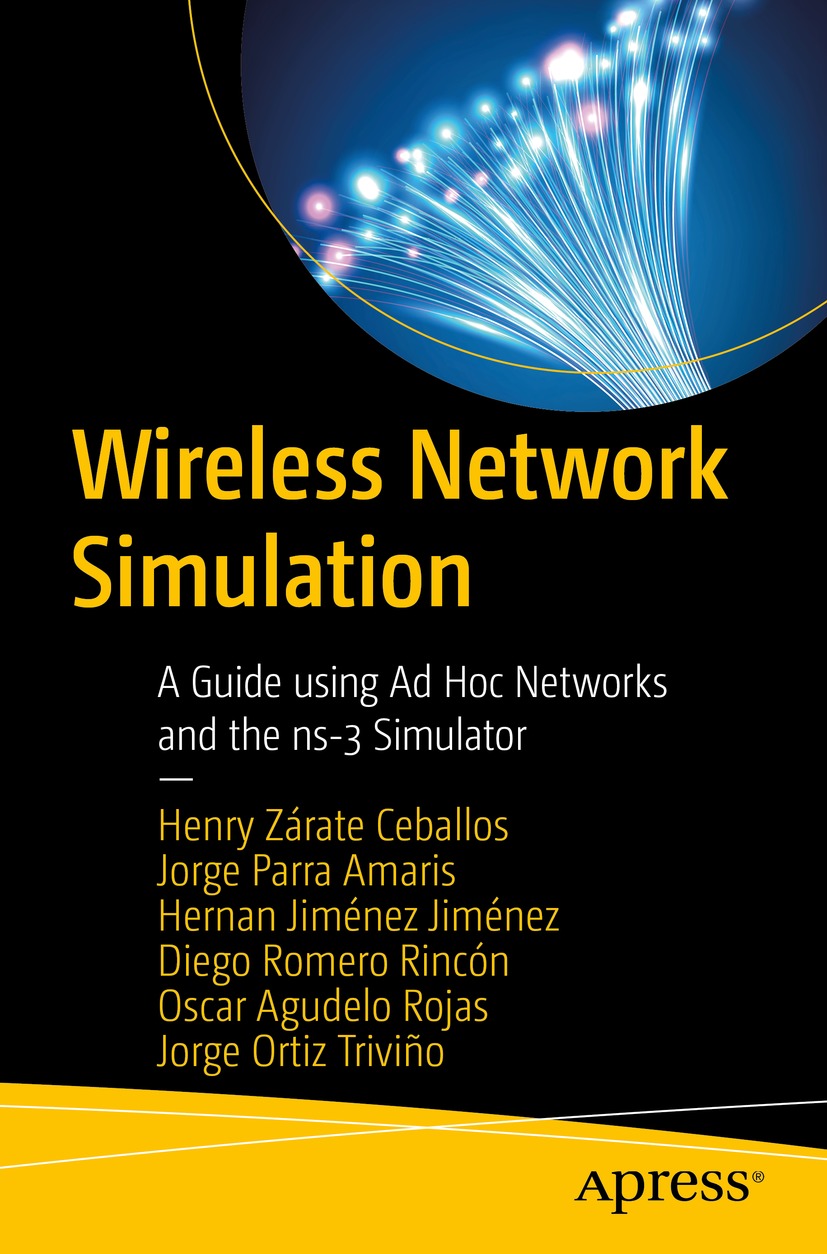

Any source code or other supplementary material referenced by the author in this book is available to readers on GitHub via the books product page, located at www.apress.com/978-1-4842-6848-3 . For more detailed information, please visit www.apress.com/source-code .
This Apress imprint is published by the registered company APress Media, LLC part of Springer Nature.
The registered company address is: 1 New York Plaza, New York, NY 10004, U.S.A.
Today connectivity is the principal need in our technologically linked society. In this information society, users from children to elders share their information, show their feelings, and publish their lives on the information networks. Distributed and highly complex systems established between machines support these networks, which interact in fractions of seconds over long distances, delivering all kind of services. Both machines and services are transforming our environment, with engineers new ideas about computing devices, data networks, and information systems. This high demand for services is the result of the evolution of several elements: first, the growth of the Internet due to the changing nature of user preferences, the increasing number of connections, and the development and diffusion of social networks. Another factor is the emergence of mobility features that add dynamic and random behavior to linked devices, systems, and users.
Network services are support services at cities, government institutions, university campuses, and companies, to name a few. These networks provide service to the Internet and intranets, allowing shared information, services, and stablishing users communications. Access to these services is through different means such as optical fiber, copper, and air. Commonly, the interactions between users happen over several networks and mediums. The change of mediums is one of the critical processes for the throughput and quality of network services and the management of the systems supported by them across all communications channels and network components. Network components are usually diverse, and with only a few of them, it is possible to build relatively complex systems. It is difficult to predict their performance or characterize their operation when there are too many nodes, a heterogeneity of components, multiple layers of specialized functions, different services, and different mediums.
With all these factors, how do you know what the network behavior will be? There are two ways: first you can emulate it or determine the key points of the traffic behavior virtually through modeling or by reproducing the logical processes involved. The reliable option to emulate is intended to reproduce the network, routers, switches, nodes, and users; however, it is quite extensive and expensive. Another solution is the use of simulators, which are computational tools that allow the generation of a similar scenario to a real one. The use of simulators can help to explore interactions, component performance, and theoretical limits. Simulations are useful tools for empirical research because they permit us to generate data from a real network that can be high priced or difficult or impossible to control when designing a new network model that needs novel hypotheses for experimentation.
Setting up a virtual environment is useful to re-create a massive network with thousands of nodes. For instance, to evaluate mobile data traffic in IoT, Cisco [1] estimates that the monthly global mobile data traffic will be 49 exabytes by 2021, and the annual traffic will exceed half a zettabyte. The IoT environment has produced an increase in mobile devices, which will represent 20 percent of the total IP traffic. The platform business creates real Big Data scenarios and connects consumers with producers who share information, goods, and services through the Internet.
Simulation is a type of research methodology to compare some models, identify hypotheses, and understand the behavior and interactions between services, users, devices, and architectures. Since a network simulator can be event-based, each event represents an abstraction of a network and a computer system. For instance, nodes and physical networks can be represented in classes such as node and channel classes. The tools and components used, and the explanations, revolve around the ns-3 simulator.
The ns-3 simulator allows the simulation and emulation of networks. It is an open and free simulator that emulates networks using the network interface card (NIC) of the computer that tests and transports the traffic generated by the simulation script and saves the simulation data in different traces for post-simulation data analysis. In this sense, it is important to discuss many concepts related to simulators, the abstractions used for the ns-3 simulator, the application of the stack protocols (TCP, UDP, OLSR, and so on), and the computational model created to imitate the NICs, routers, and other network devices.
With simulation, it is easier to get quantitative results, identify relationships, establish system interactions, determine component performance, and reach theoretical limits. One of the best ways to improve and check the simulation results is to share their results and scripts. In a huge system like the Internet, due to scale, heterogeneity, and level of interaction, the exclusive analytical option is to simulate. It is useful when it is necessary to perform statistical models for data interpretation, with one simulation or with a set of simulations. Each simulation has stages and requires a working methodology. The main objective of this book is to show the mechanism and techniques to design and create simulation models, use the simulator and analyze the results, and find the factors that affect and describe the simulation or the model created.
Font size:
Interval:
Bookmark:
Similar books «A Guide using Ad Hoc Networks and the ns-3 Simulator»
Look at similar books to A Guide using Ad Hoc Networks and the ns-3 Simulator. We have selected literature similar in name and meaning in the hope of providing readers with more options to find new, interesting, not yet read works.
Discussion, reviews of the book A Guide using Ad Hoc Networks and the ns-3 Simulator and just readers' own opinions. Leave your comments, write what you think about the work, its meaning or the main characters. Specify what exactly you liked and what you didn't like, and why you think so.

